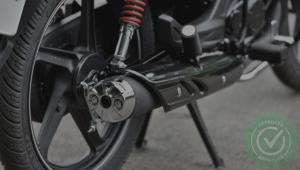Program Overview
This program equips professionals with a deep understanding of the European ECE regulatory framework, enabling them to navigate complex automotive compliance landscapes. Delivered by a veteran industry expert with over 25 years of experience, the course blends foundational concepts, situational problem-solving, real-world case studies, and interactive simulations. Participants will explore regulatory interpretation, harmonization strategies, and common pitfalls in cross-border vehicle certification. With a focus on actionable insights, the program is tailored to help organizations minimize compliance risks and ensure smoother market entry across Europe.
Features
- Interpret key components of UNECE regulations and type approval frameworks.
- Analyze harmonization gaps between ECE and national standards.
- Apply compliance principles to real-world automotive scenarios.
- Strategize for upcoming regulatory changes in EVs, ADAS, and cybersecurity.
Target audiences
- Automotive Regulatory Affairs Teams
- Compliance, Legal & Regulatory Teams
- Product Development Leads
- Certification Engineers
Curriculum
- 6 Sections
- 28 Lessons
- 1 Day
Expand all sectionsCollapse all sections
- Introduction to ECE Regulations6
- 1.1Historical background & evolution of UNECE and WP.29
- 1.2The 1958 & 1998 Agreements: Scope, Signatories, Key Differences
- 1.3The ECE Type Approval System vs National Approvals
- 1.4Role of GRs (e.g., GRVA, GRE, GRSP, etc.)
- 1.5Importance of Regulation No. 0 (Global Technical Regulation – GTRs)
- 1.6Key Terms: UNECE, WP.29, GRVA, GTR, Mutual Recognition, Type Approval
- Interpreting ECE Regulation Framework5
- 2.1Structure of ECE Regulation Documents: Main Text, Annexes, Amendments
- 2.2Reading a Regulation: Case of Regulation No. 13 (Braking) or No. 48 (Lighting)
- 2.3Understanding “Series of Amendments” and transition timelines
- 2.4Mutual Recognition of Approval Certificates across member countries
- 2.5Group Activity: Regulation Decoding Simulation
- Practical Harmonization Challenges5
- 3.1How OEMs and Tier 1s handle conflicting national & ECE requirements
- 3.2Case Study 1: India’s CMVR vs ECE R standards
- 3.3Case Study 2: Exporting to the EU – Technical File Requirements & DoC
- 3.4Case Study 3: ECE R100 (EV safety) implementation for battery components
- 3.5Debrief: Lessons learned from cross-jurisdictional mismatches
- Interactive Simulation – ECE Regulation Compliance Lab6
- Strategic Trends & Future Outlook4
- Wrap-up, Q&A, Action Planning2






